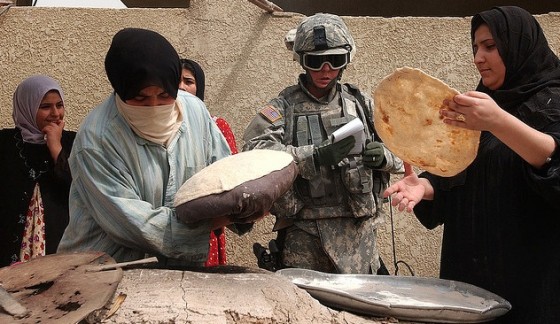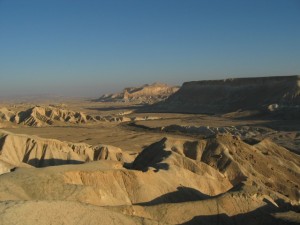A heat wave in Russia topples its wheat supply, leaving Egypt in the lurch. And threats of shortages, have international media in a panic. Due to the weather in Russia, Ukraine and Kazakhstan’s wheat production will drop by as much as 27 per cent in 2010/2011. And recently, a wheat fungus in Iraq due to increased temperatures has also compromised the annual output.
According to the UN-run IRIN news source, wheat rust infection rates have climbed steeply since last year because of warmer weather and higher temperatures. Hameed Mohammed Jawad, head of the Agriculture Ministry’s crops protection department said: “We don’t have a final percentage for the damage wheat rust caused last season, but preliminary information indicates it hit at least 10-15 percent of Iraq’s wheat crops.” Wheat stem rust, also known as wheat black rust, can destroy entire fields and even whole crops. The pathogen enters the stems of the plant and destroys the vascular tissue. There are three types of rust that can harm wheat, but stem rust, of which Ug99 is a variant, is the most feared as few wheat varieties have any resistance to it.
Ug99 was discovered in Uganda in 1999 and soon spread to Kenya and Ethiopia before travelling over the Red Sea in 2006 to Yemen, where it appeared in a more deadly form. In 2007 it blew into Iran. Another mutation was discovered in South Africa in 2009 and four more forms were discovered by scientists in June 2010.
Twenty-six countries are on the Food and Agriculture Organization’s (FAO) danger list for Ug99, posing a significant threat to one third of global wheat production – not welcome news at a time when 2010 global wheat harvest projections are down sharply on 2009 mainly because of the likelihood of poor harvests in Russia and Eastern Europe.
“We are not sure yet if the new strain of Ug99 has hit Iraq or not,” said Jawad. “We know that it reached Syria, Saudi Arabia and some Iranian areas near the border with Iraq but we’re not sure yet if it passed through Iran to Iraq or not.”
He said that Iraq had recently sent samples of its wheat varieties to a FAO-run lab in Kenya to determine their possible susceptibility to the new strain of Ug99.
He also said that over the past two years his ministry had worked on a survey of all wheat-growing areas in Iraq to determine the scale of the milder wheat rust infection in the country. The survey was completed in May but the results will not be ready until 2011.
Despite wheat rust infections, Iraq’s 2009-2010 wheat production (2.75 million tons) was 61.7 percent more than its 2008-2009 production (1.7 million tons), according to Abdul-Zahra al-Hindawi, spokesperson for the Planning Ministry’s Central Organization for Statistics and Information Technology. The wheat season typically begins in late September or early October and ends in late April or early May.
“The reasons behind this increase were the government’s issuance of equipment, good seeds, fertilizers and loans to farmers, in addition to helping them drill wells,” Al-Hindawi said.
The northern province of Nineva was the most productive area with a contribution of 25 percent of the country’s harvest; second was nearby Ta’amim Province with 13 percent; and third was the southern province of Wasit with 11 percent, al-Hindawi said. According to Agriculture Ministry figures released early this year, the country’s wheat consumption is estimated to be 4.5-5 million tons this year. Imports will help meet the gap.




